Table of Contents
Playing an acoustic guitar vs. an electric one is a pretty common thing to do if you’re a guitar player (shocker, I know)…
There’s no mistaking that electric and acoustic have their own unique qualities. There’s just a completely different feel and tone that an acoustic brings to the table that an electric can’t, and vice versa
While acoustic guitars (the 6 string type, that is) are extremely common, acoustic bass guitars may not be and tend to get somewhat overlooked by even the most advanced players.
And you know what? That’s truly a shame!
An acoustic bass guitar can introduce you into a whole different way of thinking when it comes to your bass playing approach.
We’ve already taken a look at some of the best electric bass guitars in another article, but what should you look for when it comes to acoustic models? Which features make one model better than another?
I’ve got the behind the scenes scoop on 9 of what I feel are the best acoustic bass guitars you’ll find lurking around, plus a whole load of information on how to select the right acoustic bass for you.
Let’s rumble on!
The 9 Best Acoustic bass Guitars:
| Image | Bass Guitars | Summary | Check Price |
|---|---|---|---|
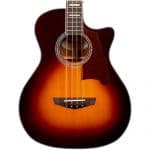 | D'Angelico Premier Series | Best Choice: Great build quality while also being highly affordable | Check price |
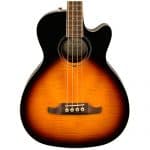 | Fender-FA-450CE | Classic Fender Quality: Well constructed, easy to play and affordable | Check price |
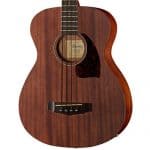 | Ibanez PCBE12MH Acoustic-Electric Bass | Best Value: Perfect entry-level acoustic bass for beginners | Check price |
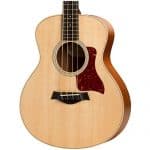 | Taylor GS Mini-E | Premium Pick: Scaled-down in size, but packs a serious punch | Check price |
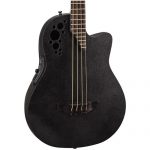 | Ovation Elite TX Mid-Depth | Unique Design: Ovation’s styling and use of materials deliver a serious tone | Check price |
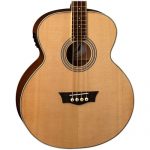 | Dean EAB | Ultra affordable: A great option if you don’t have a big budget | Check price |
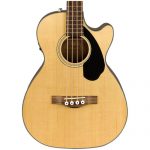 | Fender CB-60SCE | No Frills, But Great Overall: Aimed at beginners looking for a simple, solid acoustic | Check price |
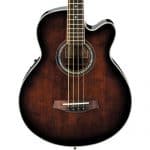 | Ibanez AEB10E | Fan Favorite: Arguably one of the most popular models out there | Check price |
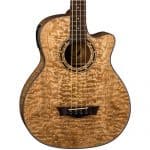 | Dean Exotica Quilted Ash | Stunning Design: If you’re looking to turn heads and warm ears, check out the Exotica | Check price |
D'Angelico Premier Series Mott Single Cutaway Acoustic Bass
My #1 pick for the best acoustic bass guitar is the D’Angelico Premier Series Mott model.
That may seem a bit unusual since the D’Angelico brand is usually associated with mid-to-high end hollow body 6 string guitars, but make no mistake – the Premier Mott rises above the rest in my humble opinion.
The body is constructed with a solid Sitka spruce top with laminated mahogany sides and back, and the Grand Auditorium shape is plenty big enough to give you volume for days on end.
Single cutaway acoustics are attractive and functional, as it gives you access to each of the 20 frets.
The solid mahogany neck is super strong and stable, and it’s covered with a fretboard made out of Sonokeling. Yeah, I know – I can’t pronounce it either, but it’s a type of Indian rosewood that has the same tone profile as ‘true’ rosewood.
The headstock is loaded with Grover Super-Rotomatic tuners for precise and smooth adjustments.
The icing on the cake is the Fishman Presys+ preamp system. It has a ton of bells and whistles, such as a 3-band EQ, a phase filter to help with feedback issues, and an onboard chromatic tuner.
Taking all of these features into consideration, what’s even more impressive with the Premier Mott is the price; in my opinion it may be one of the best values on the market today.
Positives
- Solid Sitka spruce top and Grand Auditorium shape for maximum resonation and volume
- Mahogany neck with a Sonokeling fretboard and Grover Super-Rotomatic tuning machines
- Fishman Presys+ preamp system with an advanced feature set
Negatives
- No hardshell case or gig back is included

Fender FA-450CE Acoustic-Electric Bass Guitar
Fender has a reputation for producing some iconic electric bass models over the years (Jazz or Precision ring a bell?), but it’s safe to say that they wouldn’t put their name on just ‘any’ old thing.
The FA-450CE is a budget level model that may be the one that scratches your acoustic bass guitar itch.
A laminate top with a flame maple veneer (a thin piece of wood) provides good tone while being a great visual pairing with the deep sunburst finish. Laminate mahogany is used for the back and sides as well.
Solid mahogany is the tonewood of choice for the neck, and it has a laurel fretboard that the 20 frets of the FA-450CE can call their home.
Onboard electronics feature a Fishman preamp that has volume, bass, and treble controls to tweak your sound to your liking. It also has an integrated tuner and a battery strength indicator (which just may save your life during a gig…)
Positives
- Flame maple top creates a stunning look when combined with the attractive sunburst finish
- Fishman brand preamp with a 2-band EQ system helps to deliver maximum performance at an affordable price point
Negatives
- It’s always a good thing to have some way to protect your investment. Unfortunately, any case or bag would have to be purchased separately.

Ibanez PCBE12MH Acoustic-Electric Bass Guitar
With the PCBE12MH, Ibanez has created an entry level acoustic bass that has many of the same features found in models that cost several times more.
The PCBE12MH is unique from many other acoustic bass models in that it uses Sapele exclusively for the top, back, and sides of the body. Sapele isn’t commonly known as a tonewood, but it is a variant of mahogany that is being used increasingly in models at the lower end of the scale.
That being said, it does possess some of the same tonal characteristics but is a lot more prone to dings, dents and damage if abused.
A Maple neck and Nandu Wood fretboard help to add to the tonal warmth, and the chrome tuners are amazingly responsive for a bass at this price point.
Using a combination of an Ibanez piezo under-saddle pickup and their AEQ-2T preamp system, the PCBE12MH produces an impressive tone that can be lets you controlled with a 2-band EQ setup.
It also has an onboard chromatic tuner for added convenience.
Positives
- Sapele body construction gives mahogany-like tone in an acoustic bass targeted for the budget market
- The Ibanez branded AEQ-2T preamp system is simplistic, but effective enough to get the job done
Negatives
- The volume when playing unplugged could be louder
- Adjustments may have to be made to the factory setup to minimize fret buzz

Taylor GS Mini-e Acoustic-Electric Bass Guitar
If there’s one thing that’s true about acoustic bass guitars, it’s that they can tend to be a bit big and bulky.
Taylor’s GS Mini-e Acoustic-Electric Bass fights that problem, giving you many of Taylor’s high quality features in a smaller package size.
The Mini-e sports a solid Sitka spruce top along with layered sapele sides and back. Sapele is used for the neck construction as well, and it has a tone profile that has a prominent low end with a touch of midrange along with a well-defined higher frequency; it is a very suitable alternative to traditional tonewoods (such as mahogany).
One thing about Taylor guitars is that their electronics are typically top notch, and the Mini-e is no exception.
It features their respected ES-B system, using an ES-B preamp along with an ES2 pickup that has been tweaked to maximize use with a bass.
With a scale length of only 23-½”, you might be fooled into thinking that it’s more of a novelty than anything, but you’d be wrong. The Mini-e may be small, but it performs just as well – if not better – than many of its bigger brothers in the market.
Positives
- Solid Sitka top with sapele body and neck construction provides an excellent tone that rivals other popular tonewoods
- Small size makes it easy to transport and may be more comfortable to play than some ‘regular’ size acoustic bass models
- Taylor ES-B electronics package provides legendary Taylor tone
Negatives
- ES-2 pickup may require some setup in order to maximize the output level

Ovation Elite TX Mid Depth Acoustic Bass Guitar
The unique design of an Ovation acoustic isn’t limited to 6 string guitars. With the Elite TX Mid-Depth, you’ll find many of the same features in a well-crafted acoustic bass.
The biggest thing that’ll hit you when you first look at the Elite TX is that there’s no wooden body.
It does have a solid spruce top, but the sides and back that you’ll find on a traditional acoustic have been replaced by a shallow composite Lyrachord bowl. This changes not only the ergonomics of the instrument but has a bearing on the overall sound and volume projection as well.
The Elite TX has a solid maple neck with a true rosewood fretboard, which is more in line with what you’ll see on acoustic guitars from other manufacturers.
The electronics are worth a mention as well. Here you’ll find an Ovation OP-PRO preamp system, which gives you additional features such as a 3-band EQ and an onboard chromatic tuner.
Put them all together and you’ll get that tone which you can only get from an Ovation, and you can have it for a fairly modest price as well.
Positives
- Lyrachord bowl replaces the back and sides to improve ergonomics while lending a distinct tone
- Ovation OP-PRO preamp system allows expanded tone shaping with a 3-band EQ system and also offers the convenience of an onboard tuner
Negatives
- While the ‘Ovation’ sound is indeed unique, it may not be to everyone’s liking
- No hardshell case or gig bag is included to protect it during storage or while in transport

Dean EAB Acoustic-Electric Bass Guitar
If you’re looking for a good beginner’s acoustic bass that won’t take a lot out of your wallet, then the Dean EAB model may be your right choice.
The body on the EAB is constructed from a laminate spruce top along with laminated mahogany for the back and sides, giving you a strong construction while still giving some good tone and volume projection.
Solid mahogany is used for the neck, and you’ll find it covered with a balsamo fretboard (the same material is also used for the bridge as well).
Balsamo is a sustainable alternative to Brazilian rosewood, and while it may be less expensive to use in the manufacturing process, the tone characteristics are similar.
A Dean-branded DMT-G03 preamp and under-saddle piezo pickup combination is used to get yourself heard in live or recording environments, and it offers a multi-band EQ along with a tuner, a phase switch for feedback control, and a low battery LED indicator.
Positives
- Laminated construction for the top (spruce) and the back/sides (mahogany) provides strength while enabling good tone
- Onboard DMT-G03 preamp system has features found on competing preamp models that may cost much more
Negatives
- Volume when played unplugged may be too low
- Overall build quality could be better

Fender CB-60SCE Acoustic Bass Guitar
Sometimes all it takes is an instrument that does the basics, but does it very well. That’s what you’ll find in the Fender CB-60SCE.
It’s a decidedly ‘no-frills’ model that simply does what it’s supposed to do – be a great acoustic bass option targeted at the lower end of the market.
First off, the CB-60SCE has a solid spruce top – that’s a feature that isn’t typically found in models in this range. The back and sides are laminated mahogany, which truthfully is a construction method that’s found in most mid-level (and even some higher-end) acoustic basses as well.
The mahogany neck has a set-in joint for strength, and it has a rosewood fretboard that’s loaded with 22 frets and traditional dot inlays.
Amplification with the CB-60SCE is just as functional as it is on more expensive basses, as it uses a Fishman preamp with a piezo bridge saddle pickup. The Fishman model used, while not their top-end model, has all of the base features you’ll need – volume, 2-band EQ, a tuner, and a battery indicator.
Simple, yet effective, functional and relatively inexpensive. That’s the Fender CB-60SCE in a nutshell.
Positives
- The solid top and laminate back & sides (using ‘traditional’ tonewood selections) rivals upper end models
- Fishman electronics package with an onboard tuner and 2-band EQ
Negatives
- Yet another model that does not come with a case or gig bag

Ibanez AEB10E Acoustic-Electric Bass Guitar
The Ibanez AEB10E is a level above the AEB5E that we looked at a little earlier.
It takes the same quality level and adds additional features and benefits to create a model that’s more in the mid-range of the marketplace.
Here you’ll find a spruce top and sapele back and sides, which is a step above the agathis that is found on the AEBE5. The neck is constructed from okoume, which is steadily gaining traction from many manufacturers as a suitable mahogany replacement.
The tonewood choice for the fretboard is just as unique, as it uses purplewood; no, it’s not really purple, but it is a Brazilian rosewood alternative that shares some of the same traits.
A Fishman Sonicore pickup starts the signal chain, getting paired up with an Ibanez AEQ-SP2 preamp system for accurate sound reproduction. The preamp features a volume knob, 2-band EQ, and a chromatic tuner.
Positives
- Unusual but extremely functional tonewood choices (okoume for the neck, spruce and sapele back and sides and purplewood for the fretboard and bridge)
- Fishman Sonicore pickup coupled with an Ibanez AEQ-SP2 for a flexible amplified sound
Negatives
- String volume may be unbalanced when amplified, which means micing up may be needed when performing or recording

Dean Exotica Quilted Ash Acoustic Bass Guitar
‘Visually mind blowing’ is the phrase that came to mind when I first looked at the Dean Exotica, and that’s completely due to the quilted ash top, back, and sides.
The highly figured pattern certainly makes a statement far above other acoustic basses.
Good looks don’t always translate to good quality, though…but that’s not a concern at all with the Exotica. On top of the ash body, it has a mahogany neck and a rosewood fretboard that – when you add it all up – equals one sweet sounding acoustic bass.
Unplugged tone is one thing, but the Exotica truly shines when plugged in as well. The piezo pickup is fed into a DMT-G05 preamp, which is loaded with extra goodies.
Here you’ll find the requisite volume knob along with a 4-band EQ (!), a presence control, a phase filter to fight feedback, a battery strength indicator, and a tuner that will let you alter your base pitch from the standard A 440hZ.
Positives
- Highly figured quilted ash is used for the top, back and sides, giving an impressive visual appeal that demands attention
- DMT-G05 preamp system has many additional features not found on many of the competition’s units
Negatives
- May need to have the factory setup tweaked to achieve the best playability

What’s the difference between an electric and an acoustic bass guitar?
It’s not a matter of a single ‘difference’ here – let’s just say that there are a TON of them. An acoustic bass guitar is really a completely different type of instrument from an electric, just as an acoustic guitar is light years away from being a Stratocaster or a Les Paul.
Let’s take a quick look at the big hitters…
Body Construction
Acoustic bass guitars are constructed in the same exact way that acoustic 6 string guitars are. Instead of the solid wood body that an electric has, an acoustic bass body is basically a big wood ‘box’.
It has a thin wood top (strengthened and supported by a patterned wood bracing on its underside) with a sound hole, along with wood sides and a back panel.
Neck Construction
Electric bass guitars usually have a bolt-on neck, but there are a few models which include a ‘neck through body’ design.
On an Acoustic bass, it typically is attached to the body using a glued-in dovetail joint of some sort. One thing that you may see in an acoustic bass is the method used for the actual construction of the neck itself. Not only are they longer (thanks to the scale length of a bass being more than a 6 string), but the thicker strings can have a LOT more tension.
Most of the models I checked out have solid necks, and those help to increase overall vibration transfer and resonance (and can be extremely stable in their own right). That’s in contrast to the multi-ply laminate construction methods (sometimes using several different types of wood) that you’ll see on many electric models.
Electronics
Electric basses have a number of pickups (typically two) mounted directly to the body (some models get away with only one, but two is pretty much the norm).
From there the output is controlled by a set of knobs that vary from master volumes, blending controls (so you can mix the output from each pickup), and tone controls, to complete active EQ setups where all of your tone sculpting gets done.
On an acoustic your choices are a little different.
Most often you’ll find what’s called a ‘piezo’ setup that’s sandwiched between the bridge and the body of the guitar. From there the signal is typically fed to an onboard preamp (usually mounted on the top side of the bass near the upper bout) where you can adjust the volume and also the EQ.
Many preamps even have a tuner built in as well.
Hardware
The hardware – particularly the bridge – that’s found on an acoustic bass is worlds away from what you’ll find on an electric.
On the electric side of the fence you’ll find a metal assembly that usually has some form of adjust-ability to it – be it back and forth in the direction of the neck (to adjust intonation, or how well it stays in tune going up the neck) or up and down (which controls the string ‘action’, or height of the strings off the fretboard).
With an acoustic? Not so much. There you’ll most likely see a single piece of bone, plastic, or some other synthetic material…and that’s pretty much it. There’s typically no real adjustment here, so your intonation and action is at the mercy of the build quality that the instrument has.
Tuning pegs on an acoustic bass typically aren’t all that different than those you’ll find on an electric, so there really isn’t that much to compare in that regard.
Amplification
This one is fairly sweet and simple…
Have you ever played an electric bass without it being plugged in? If so, could you even hear it?!?
Right. I couldn’t hear it either.
That’s not the case with an acoustic bass – no amp required, here. I’m not saying that it’ll be loud enough to play in a live setting with a band, but you WILL be able to hear it in all it’s rich, warm, and full bottom-end glory…
Which acoustic bass guitar is best for a beginner?
The answer to this boils down to a specific way of thinking:
‘Buy the best instrument you can with the amount you have budgeted to spend.’
There are some things that you really don’t need to consider if you’re a beginner. That’s important, because having some of the higher-end features can very easily translate into – you guessed it – a higher price.
For example, you may be able to find a perfectly capable beginner’s model that doesn’t have:
A Solid Top
Typically you’ll have two choices – solid and laminate.
Laminates are basically thin pieces of plywood, and their biggest claim to fame is that they are less expensive to manufacture. While the cost factor is a big one, many times the tone of the instrument may suffer.
Enough for a beginner to really notice? Nah – probably not.
But a good set of experienced ears can tell that a solid top will sound better.
An Advanced Preamp
You’ll notice that all of the models on my list have some sort of pickup/preamp system installed. Some are more advanced than others, with multi-band EQ systems, phase switches, and special features to help avoid feedback.
All you really need at the beginner level is a volume knob and a tone knob.
Sure, onboard tuners are extremely handy, but you could get by with an inexpensive clip-on tuner.
Same tradeoffs as the solid vs. laminate top – a preamp model with less features may not let you have as many tone shaping options, meaning that your overall sound may suffer somewhat. But that may not be all that big of a deal if you’re just starting out.
Playability
Ok – so this isn’t technically a ‘feature’ per se, but it’s pretty important. Some budget minded models can have less than stellar build quality, and many times you can tell just by picking it up and playing it.
Is it smooth and comfortable? Do the edges of the frets stick out past the edge of the neck? Is the string action so high that you’d have to be Superman to have enough hand and finger strength to fret the notes properly?
Luckily, I think you’ll have a good chance of finding a relatively inexpensive model nowadays that plays pretty well. Manufacturing processes have improved greatly over the years, and it’s not uncommon to find entry-level imported models that rival some of the best ones made in the US.
What are the best acoustic bass strings?
There are many variables when it comes to bass strings, the true answer will all boil down to your personal preference.
Not only are there several different materials that are used when bass strings are manufactured, there are also many different types that each has its reason for being alive. For example, roundwounds will sound much brighter than flatwounds, and they will also give more string ‘noise’ from your fingers.
So which would be best for you? We’ve put together a dedicated ‘bass strings’ article worth checking out.
Really, the best way is to try a few different types and see which ones rock your boat. You may even notice some differences between different brands of the same type.
Bottom Line
Acoustic bass guitars can be a great option for breaking out of the mold of playing the ‘typical’ electric bass guitar. The tone, feel, and overall mojo is can be completely different, and spending some good seat time with one may let you see your playing in a whole new light.
Different techniques and dynamics can come out that you didn’t even know were buried inside your fingers… It takes a good acoustic bass in order to get the full experience.
That is why I’ve picked the D’Angelico Premier Series Acoustic Bass as the top contender on the list. With all of the features in its possession that are found on more expensive models, it should be easy to see why I feel it rises above the competition.
From what I’ve seen, though, not many bass players have really had the chance to realize what playing an acoustic bass is all about.
That’s where you come in! There’s nothing better than a good community where others can share what they’ve experienced. So…would you mind taking a few minutes and leaving some comments below? Your fellow 4-stringers would appreciate it!
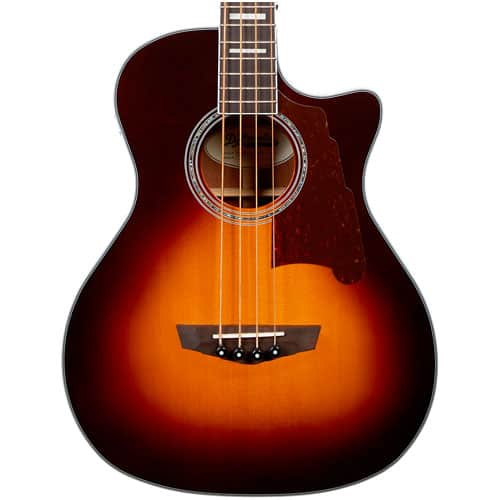
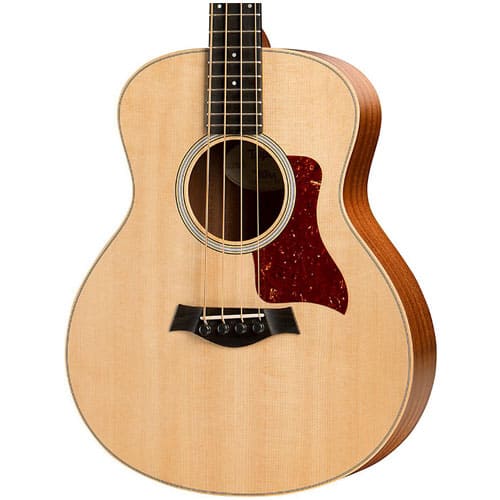
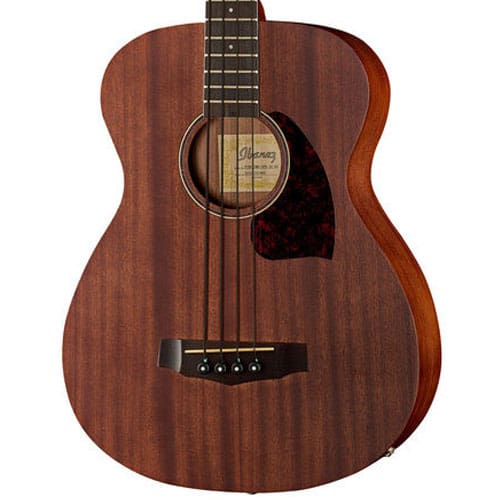
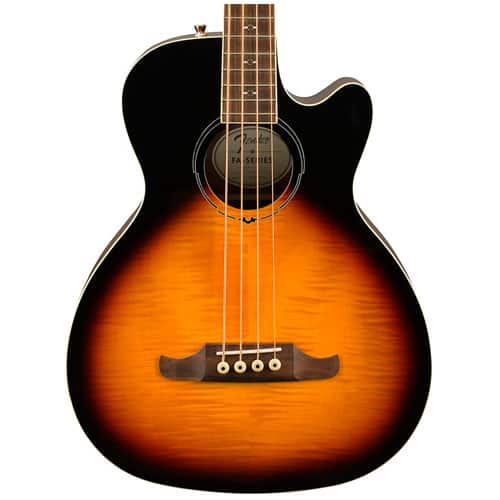
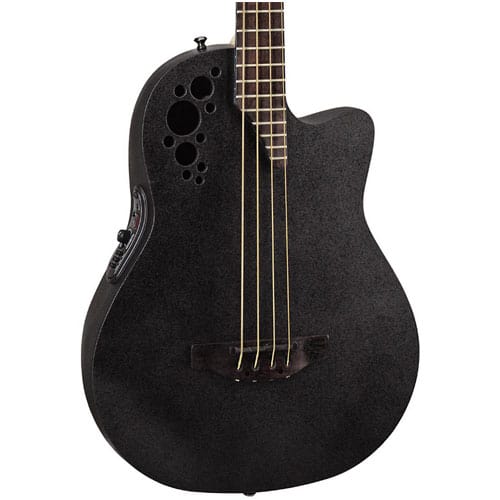
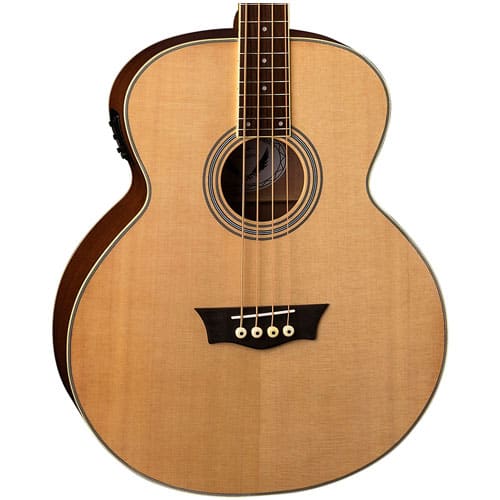
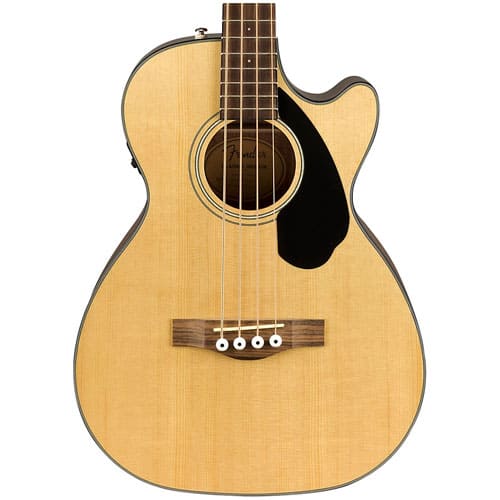
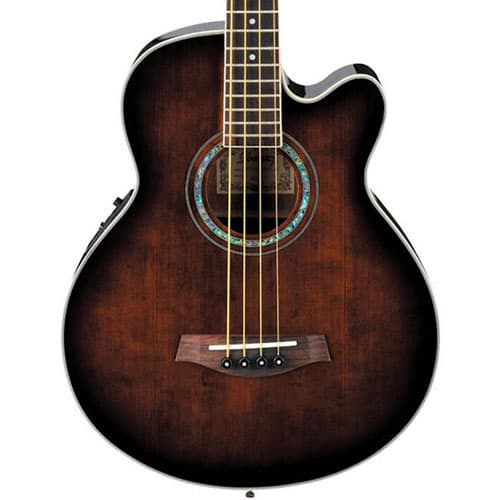
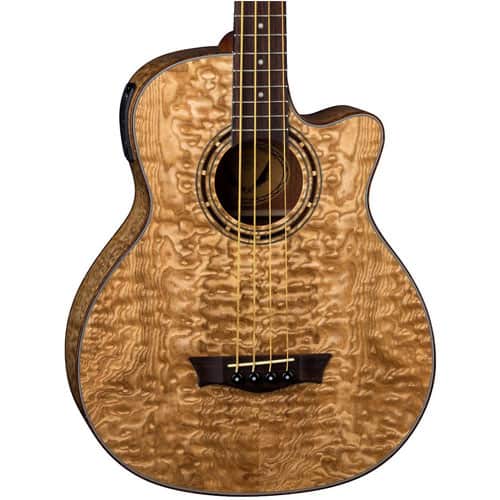

4 thoughts on “Looking To Go Unplugged? Here Are 9 Of The Best Acoustic Bass Guitars…”
I am 54 years old and about 1.5 years ago I picked up the acoustic/electric bass. I have a good friend that plays 6 string so he and I play together often. I don’t see myself playing out on stage so the acoustic bass makes sense for me. I can plug in when needed. I am looking to take the next step from my entry level and that is where I found this very helpful article. Thanks for the info.
Hi Doug! Absolutely, acoustic bass guitars are awesome for light practice without having to lug around any other additional gear, so I completely agree with your thoughts. Thanks so much for stopping by and for your kind words, so glad to hear this article is helpful to you. 🙂
Jean
I am 69 Years old and have just started to play the bass guitar, I got one of those Squire Kits and have been doing pretty good. Now I want an acoustic, I was hoping to get Fender FA-450CE until i saw what you suggested. I’m going to Guitar center next week and try them both. Thank you for all the information it really helps a beginner like me. look forward to here from you will let you know one of the two I feel comfortable with.
Hi David! Thanks so much for your kind words, I really appreciate it. I’m so glad this article helped you out, and I look forward to hearing how you get on with your acoustic bass journey!